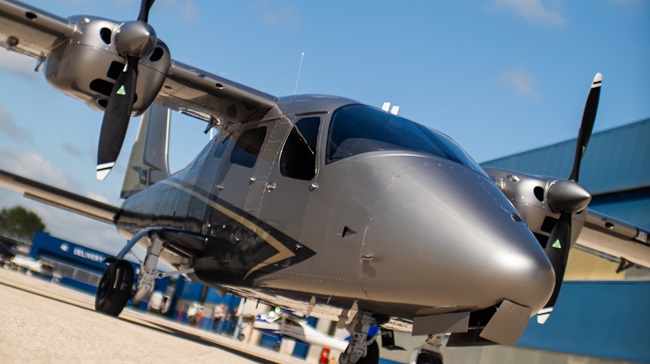Proficient Pilot: A bum rap
Reputations should be taken with a grain of salt
 Like other fields of endeavor, aviation is replete with myths, biases, and half-truths, many of which would be amusing if not taken so seriously and creating such misleading impressions.
Like other fields of endeavor, aviation is replete with myths, biases, and half-truths, many of which would be amusing if not taken so seriously and creating such misleading impressions.
When discussing airplane handling qualities, for example, the gold standard has always been the P–51 Mustang. At the risk of seeming heretical, this otherwise incredible airplane doesn’t handle that well. It is heavy on the controls with increasing airspeed, and maneuvering requires almost incessantly adjusting rudder trim. With respect to handling qualities, my favorite aircraft is Stelio Frati’s brilliant design, the SIAI Marchetti SF.260.
Another misconception stems from the oft-heard expression that an airplane “flies like a Cub,” the implication being that Piper’s J–3 is easy to fly, docile, and forgiving. The Cub is like that, but only if you’re properly trained to fly one. Like many taildraggers of that era (including my emotional favorite, the Aeronca Champ), a pilot without nimble feet can become victimized by a spin or a ground loop. The expression for an easy-to-fly, benign airplane should be, “it flies like a Cessna 172.”
It’s said the DC–3 flies like an “overgrown Cub.” Not quite. The Gooney Bird has heavy controls, is ponderous, and can demonstrate a wicked stall.
Light Sport aircraft often are described as being easy to fly, an assumption most likely made by those who have never flown one. Most LSAs have at least one “interesting” handling quality, possibly the most typical being excessive pitch sensitivity during a landing flare. I have yet to fly an LSA anywhere near as benign as a plain-vanilla Skyhawk.
There also are airplanes with bad reputations that are unwarranted. Some pilots claim, for example, that Mooneys float too much during the flare. This is true only when approach speed is excessive. Others say that the Pitts Special is squirrely, but like other airplanes that might give the visual impression of being difficult to fly, it responds well to a properly trained pilot. The Cessna 421 gets a bad rap because of its geared engines that are presumably fragile and can’t be coaxed to TBO. Mike Busch, possibly the best-known aircraft mechanic in the country, says that the “Continental GTSIO-520 is a very robust engine and routinely achieves TBO and beyond when operated properly.”
The common thread connecting airplanes with bad reputations seems to be that all of them require pilots who know what they’re doing. But then, shouldn’t this be true of all aircraft? Even though I consider myself reasonably enlightened in matters aeronautical, I confess to having fallen victim to the undeserved reputation of one airplane that has taken a particularly bad rap, the Mitsubishi MU–2B. I didn’t realize, however, that I had felt this way about the airplane until I was invited to fly one. All I could think about was the airplane’s early accident record and how the FAA created a special regulation in Part 91 that mandated special training for MU–2B pilots. Must be one wicked airplane, I thought.
What I did not know is that an exhaustive study of the MU–2B had revealed that virtually all of its accidents were caused by pilot error, typically the result of inexperience or inadequate training. The only requirement to fly one was a multiengine rating and, of course, a wallet fat enough to afford one.
In Europe, though, where a type rating is required to fly the airplane, the MU–2B had a sterling safety record.
Mitsubishi Heavy Industries knew that the MU–2B was a perfectly safe airplane when in the hands of a competent pilot. This explains why the manufacturer pleaded with the FAA to mandate that MU–2B pilots be required to have type ratings. The FAA would not agree to this because the airplane did not meet the 12,500-pound weight requirement. The FAA did, however, introduce in 2008 a special regulation specifying the training (initial and recurrent) required of those serving as pilot in command of the slick turboprop twin.
Since that time, the airplane has had a remarkable safety record (the recent accident near Tulsa involving Sen. James Inhofe’s son, Perry, notwithstanding).
Nevertheless, I was determined during my instructional flight to probe the edges of the airplane’s operating envelope and anticipated discovering some quirk or abnormality in the airplane’s handling characteristics. Pat Cannon, my MU–2B instructor, said, “Go for it, Barry. See what you can find.” What I did discover was fighter-like handling and performance that helped me to understand why these aircraft have such a devoted, enthusiastic, and almost cult-like group of owners. It is a wonderful airplane.
I did learn two more things from that flight. The first is to take reputations and preconceived notions with a grain of salt. The second is that I would love to own an MU–2B.
Web: www.barryschiff.com



